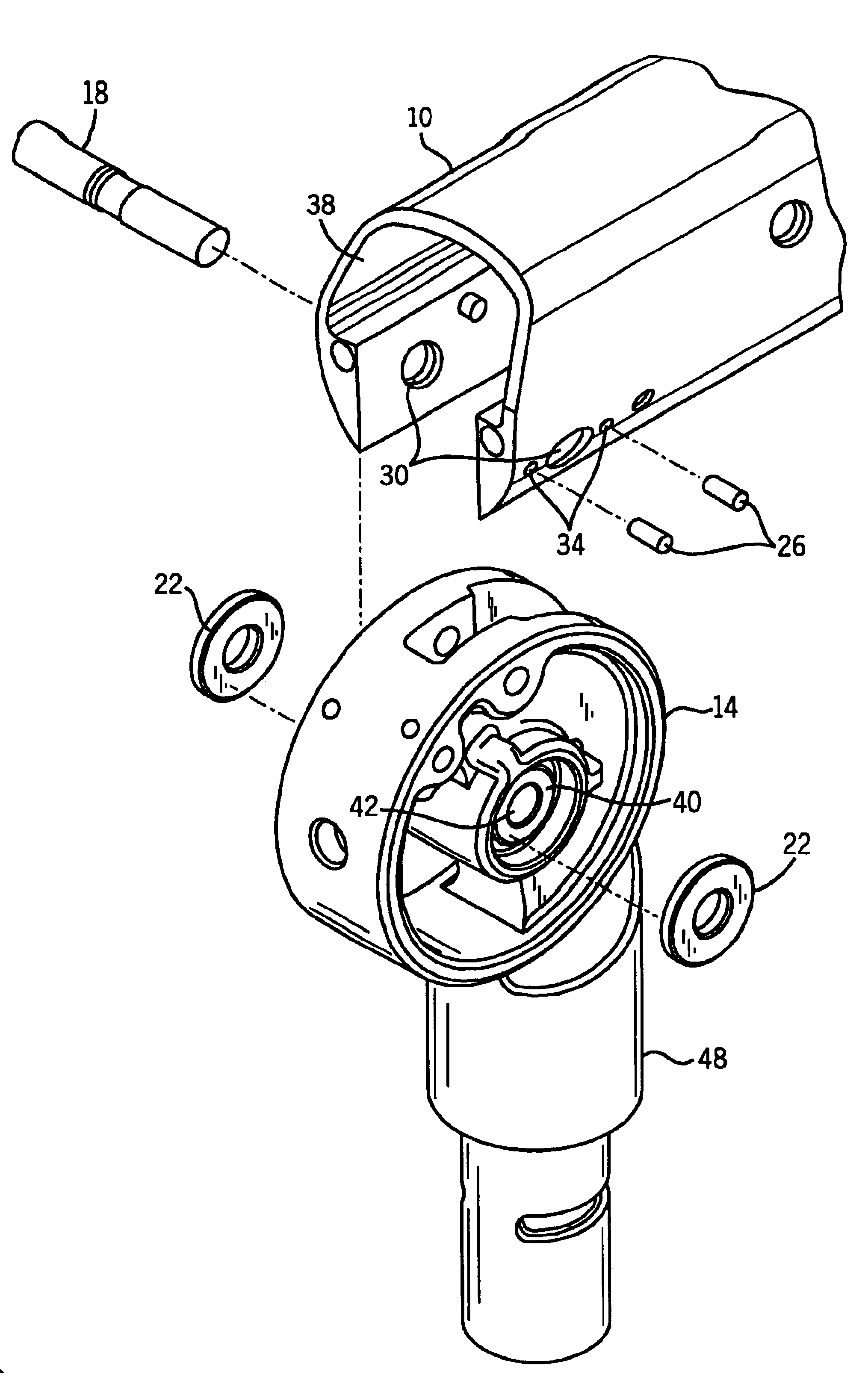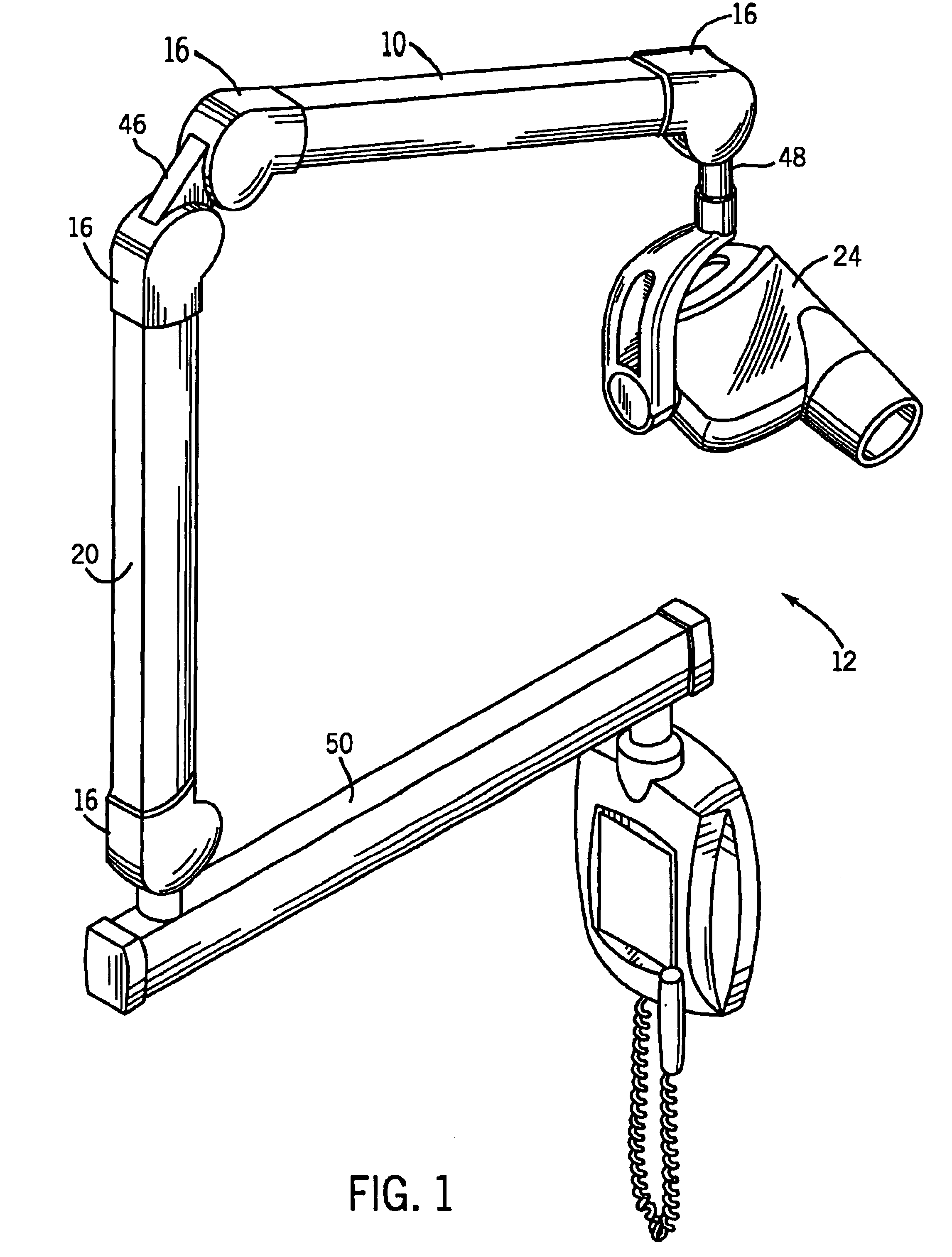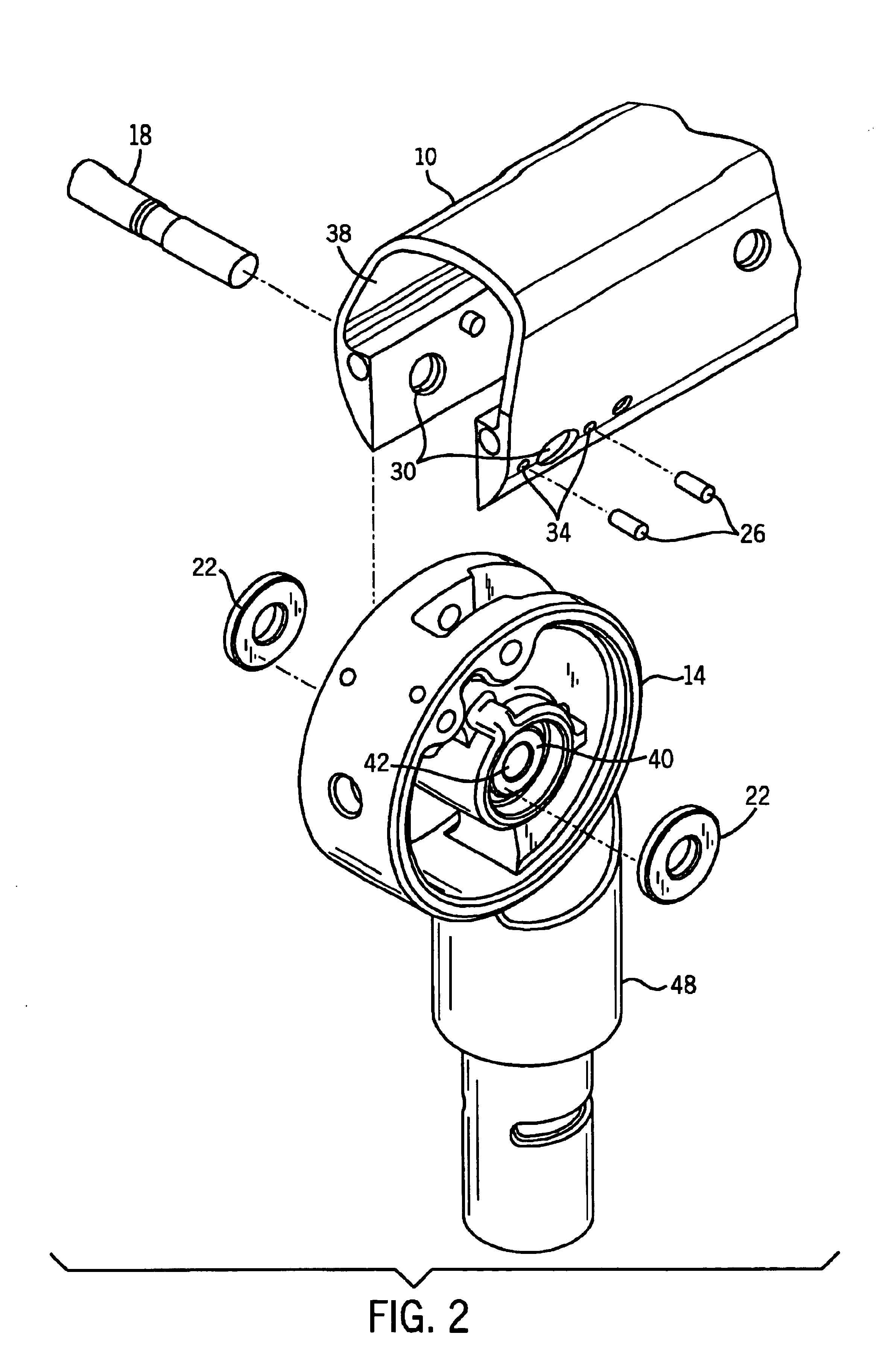Friction control for articulating arm joint
- Summary
- Abstract
- Description
- Claims
- Application Information
AI Technical Summary
Benefits of technology
Problems solved by technology
Method used
Image
Examples
second embodiment
the invention may be used with joints requiring two pivot connectors as illustrated in FIGS. 4 and 5, FIG. 4 being an exploded view and FIG. 5 being a cross-sectional view. As there shown, the pivot connector 14 is connected to a second pivot connector 14 by a coupler 46. The second pivot connector 14 is connected to a second arm 10 by a second pivot pin 18. An axial washer 22 is applied about each end of the pivot pin 18, between the sides 38 of the second arm 10 and the flat surface 40 of the second pivot connector 14. Two set screws 26 are threaded through two threaded holes 34, contacting the axial washer 22.
The pivot connector is preferably formed of cast aluminum and the axial washers are preferably formed of stainless steel. Other material combinations are possible, but many do not work as well. For example, both aluminum-on-aluminum and aluminum-on-brass tend to bond and score or result in excessive wear.
PUM
 Login to View More
Login to View More Abstract
Description
Claims
Application Information
 Login to View More
Login to View More - R&D
- Intellectual Property
- Life Sciences
- Materials
- Tech Scout
- Unparalleled Data Quality
- Higher Quality Content
- 60% Fewer Hallucinations
Browse by: Latest US Patents, China's latest patents, Technical Efficacy Thesaurus, Application Domain, Technology Topic, Popular Technical Reports.
© 2025 PatSnap. All rights reserved.Legal|Privacy policy|Modern Slavery Act Transparency Statement|Sitemap|About US| Contact US: help@patsnap.com



